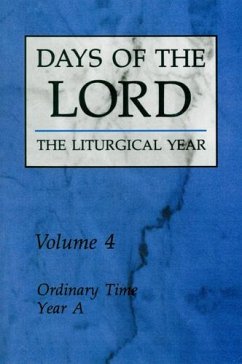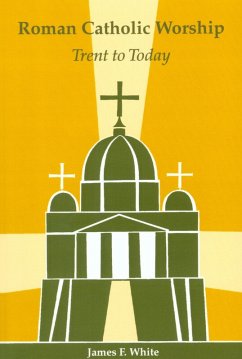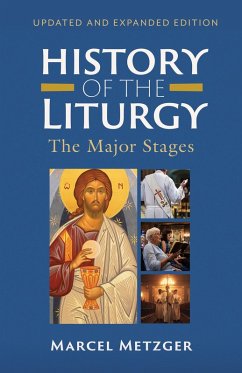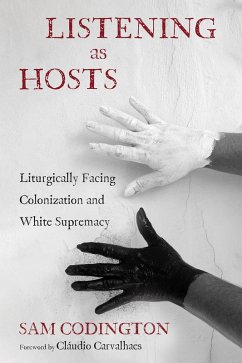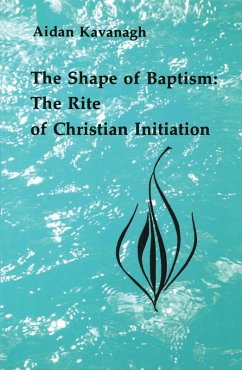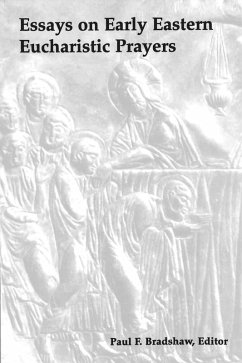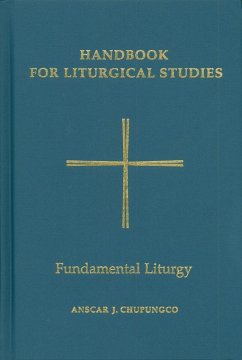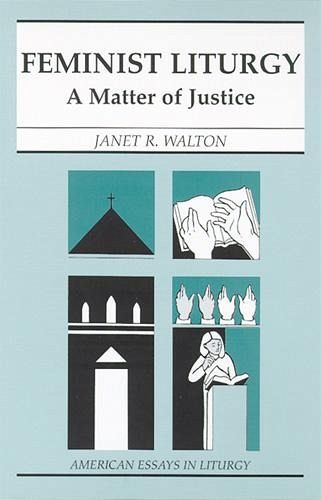
Feminist Liturgy (eBook, ePUB)
A Matter of Justice

PAYBACK Punkte
5 °P sammeln!
Feminist liturgy began in the midst of a broad human quest for justice in the late twentieth century. The Civil Rights Movement and the Anti-Vietnam War movement added momentum for women's struggle for justice. Within this ferment, women addressed the limits placed on them in secular and religious institutions as well. Feminist liturgies developed as one of a number of attempts to discover and claim a more truthful telling and embodying of the stories that shape our religious consciousness. In Feminist Liturgy: A Matter of Justice, Walton offers a partial account" of feminist liturgies to enco...
Feminist liturgy began in the midst of a broad human quest for justice in the late twentieth century. The Civil Rights Movement and the Anti-Vietnam War movement added momentum for women's struggle for justice. Within this ferment, women addressed the limits placed on them in secular and religious institutions as well. Feminist liturgies developed as one of a number of attempts to discover and claim a more truthful telling and embodying of the stories that shape our religious consciousness. In Feminist Liturgy: A Matter of Justice, Walton offers a partial account" of feminist liturgies to encourage both discussion and action so that our liturgies will be "true" for all of us.
Walton explains that liturgies typically described as "feminist" emerged in the late 1960s when women and some men realized that what they were experiencing in the liturgies not only wasn't *enough - but, in fact, wasn't *true. - a liturgical process that centers on an encounter - an engaged, embodied dialogue with God - cannot be true when females are left out of the dialogue. To make the liturgies more accurate, people joined together to discover how to use symbols, texts, and forms that expressed relationships with God more authentically.
Walton examines four aspects of feminist liturgies: the historical context in which they developed, the tasks and principles that guide them, the possibilities they offer, and application to regular institutional liturgies. In examining these aspects, Walton responds to questions, clarifies hunches, alleviates doubts, and encourages more people to contribute to the development of feminist liturgies.
Janet R. Walton is professor of worship at Union Theological Seminary in New York. She is the author of Art and Worship: A Vital Connection published by The Liturgical Press.
Walton explains that liturgies typically described as "feminist" emerged in the late 1960s when women and some men realized that what they were experiencing in the liturgies not only wasn't *enough - but, in fact, wasn't *true. - a liturgical process that centers on an encounter - an engaged, embodied dialogue with God - cannot be true when females are left out of the dialogue. To make the liturgies more accurate, people joined together to discover how to use symbols, texts, and forms that expressed relationships with God more authentically.
Walton examines four aspects of feminist liturgies: the historical context in which they developed, the tasks and principles that guide them, the possibilities they offer, and application to regular institutional liturgies. In examining these aspects, Walton responds to questions, clarifies hunches, alleviates doubts, and encourages more people to contribute to the development of feminist liturgies.
Janet R. Walton is professor of worship at Union Theological Seminary in New York. She is the author of Art and Worship: A Vital Connection published by The Liturgical Press.
Dieser Download kann aus rechtlichen Gründen nur mit Rechnungsadresse in A, D ausgeliefert werden.





